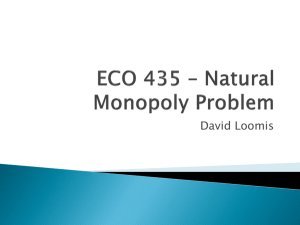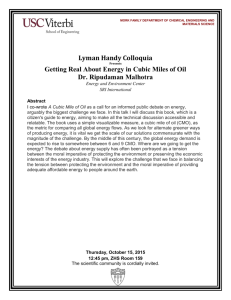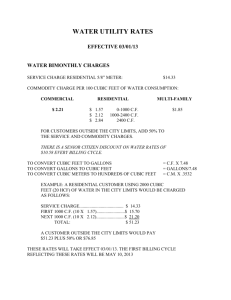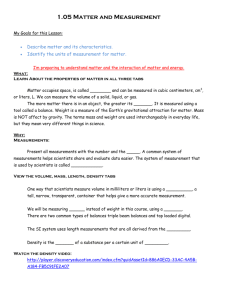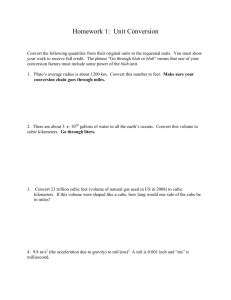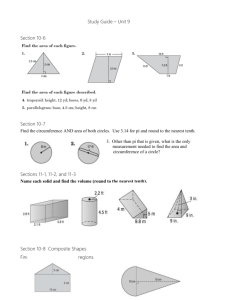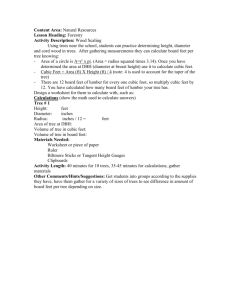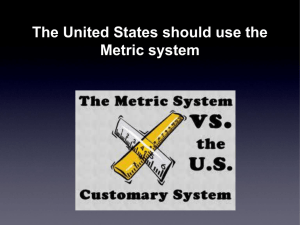Reviewing Units of Mass, Volume and More Complete this in our
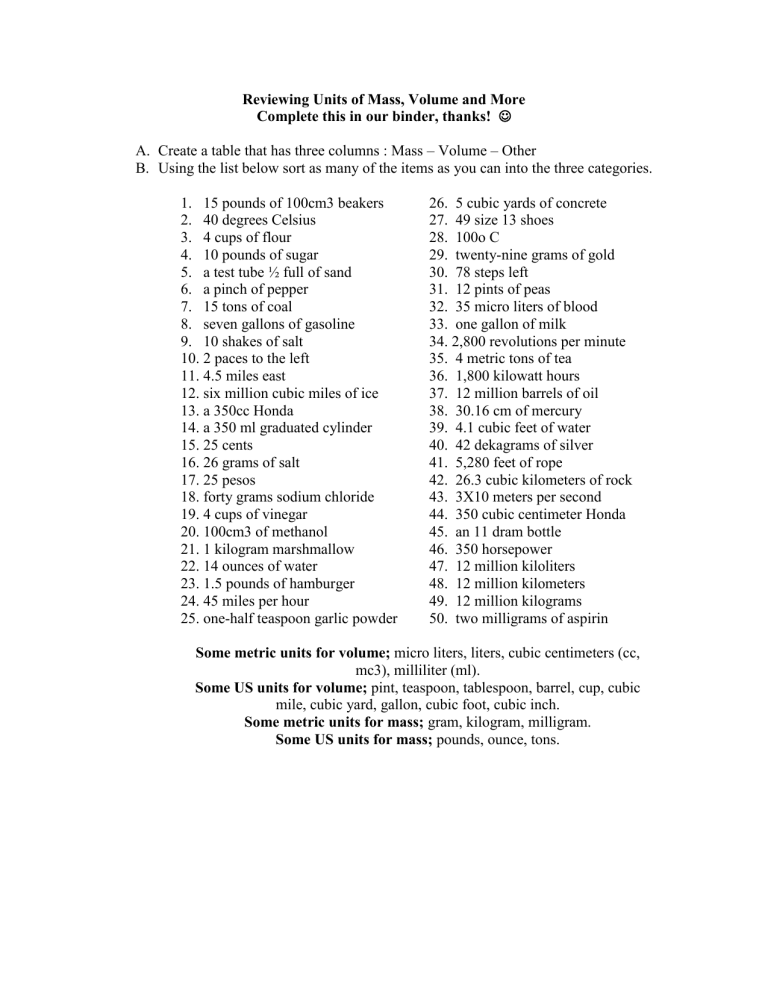
Reviewing Units of Mass, Volume and More
Complete this in our binder, thanks!
A.
Create a table that has three columns : Mass – Volume – Other
B.
Using the list below sort as many of the items as you can into the three categories.
1.
15 pounds of 100cm3 beakers
2.
40 degrees Celsius
3.
4 cups of flour
6.
a pinch of pepper
4.
10 pounds of sugar
5.
a test tube ½ full of sand
7.
15 tons of coal
8.
seven gallons of gasoline
9.
10 shakes of salt
10.
2 paces to the left
26. 5 cubic yards of concrete
27. 49 size 13 shoes
28. 100o C
29. twenty-nine grams of gold
30. 78 steps left
31. 12 pints of peas
32. 35 micro liters of blood
33. one gallon of milk
34. 2,800 revolutions per minute
35. 4 metric tons of tea
11.
4.5 miles east
12.
six million cubic miles of ice
13.
a 350cc Honda
14.
a 350 ml graduated cylinder
15.
25 cents
16.
26 grams of salt
17.
25 pesos
18.
forty grams sodium chloride
36. 1,800 kilowatt hours
37. 12 million barrels of oil
38. 30.16 cm of mercury
39. 4.1 cubic feet of water
40. 42 dekagrams of silver
41. 5,280 feet of rope
42. 26.3 cubic kilometers of rock
43. 3X10 meters per second
19.
4 cups of vinegar
20.
100cm3 of methanol
21.
1 kilogram marshmallow
22.
14 ounces of water
23.
1.5 pounds of hamburger
44. 350 cubic centimeter Honda
45. an 11 dram bottle
46. 350 horsepower
47. 12 million kiloliters
48. 12 million kilometers
24.
45 miles per hour 49. 12 million kilograms
25.
one-half teaspoon garlic powder 50. two milligrams of aspirin
Some metric units for volume; micro liters, liters, cubic centimeters (cc, mc3), milliliter (ml).
Some US units for volume; pint, teaspoon, tablespoon, barrel, cup, cubic mile, cubic yard, gallon, cubic foot, cubic inch.
Some metric units for mass; gram, kilogram, milligram.
Some US units for mass; pounds, ounce, tons.
Density Calculations
1. Find the unknown variable using the equation D=M/V a) d = 3 g/mL
V = 100 mL
M = ? b) d = ?
V = 950 mL
M = 95 g
2. Find the unknown quantity (CONVERT FIRST to g or mL) c) d = 0.5 g/cm
3
V = ?
M = 20 g a) d = 24 g/mL
V = 1.2 L = _____ mL
M = ? b) d = ?
V = 100 mL
M = 1.5 kg = ______ g c) d =
V = 0.52 L = ______ mL
M = 500 mg = ______ g
Extended:
WORD PROBLEMS
1. A block of aluminum occupies a volume of 15.0 mL and weighs 40.5 g. What is its density?
2. Mercury metal is poured into a graduated cylinder that holds exactly 22.5 mL. The mercury used to fill the cylinder weighs 306.0 g. From this information, calculate the density of mercury.
3. You mass a ball of clay to be 2.26g and then reform it into the shape of a puppy and mass it again. Predict what the mass of the clay is and explain your reasoning. (This is a hypothesis)
4. What is the volume of a textbook that has a length of 4cm, and width of 3cm and a thickness of 2cm?
5.
What is the weight of the ethanol that exactly fills a 200.0 mL container? The density of ethanol is 0.789 g/mL.
6. Roger and Jane go to the moon. They find a moon rock and find it’s MASS to be
35.98g. Then return to earth and find the MASS again. Will the mass be more, less or the same as when they found the MASS on the moon? Explain.
